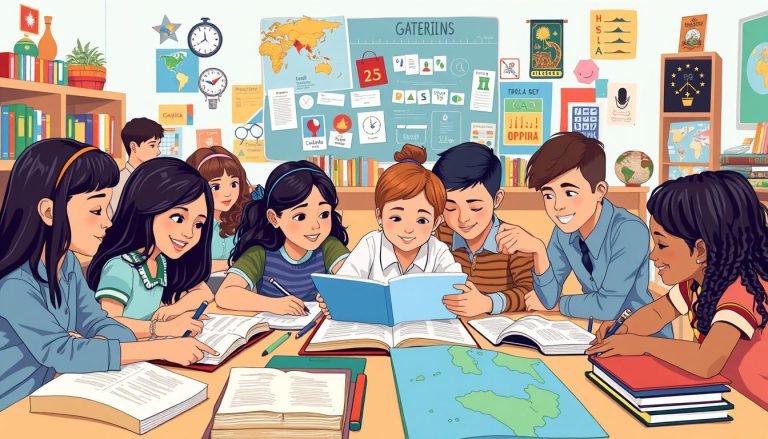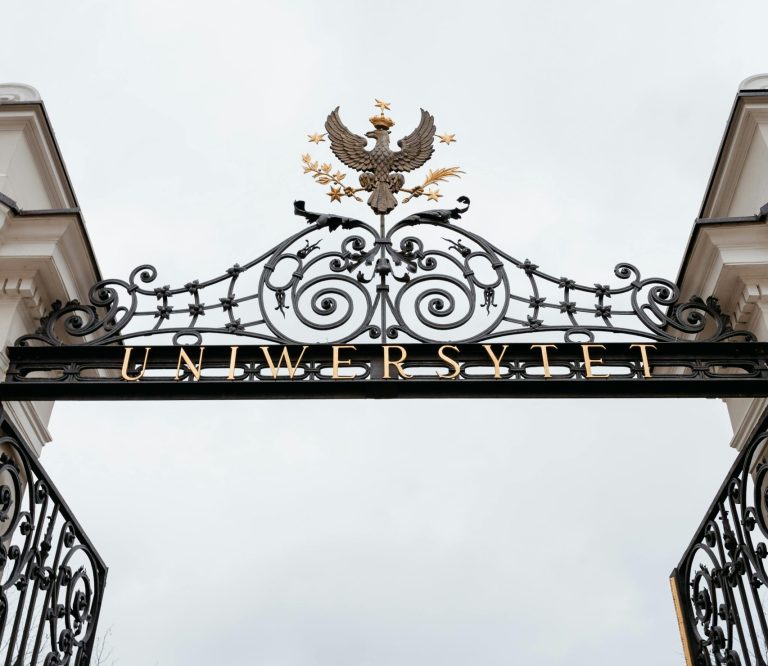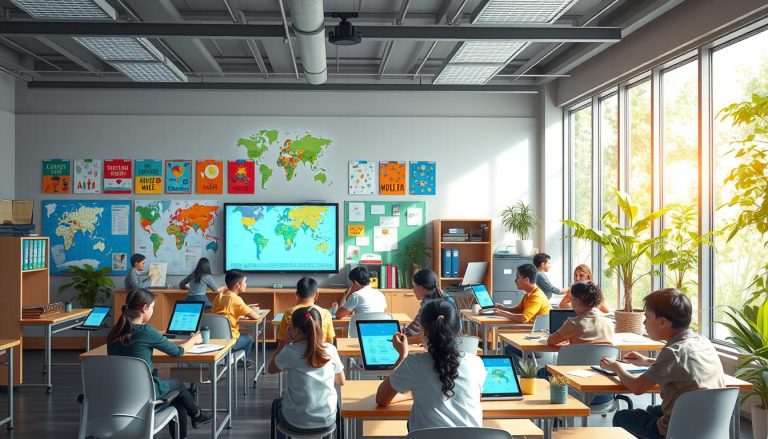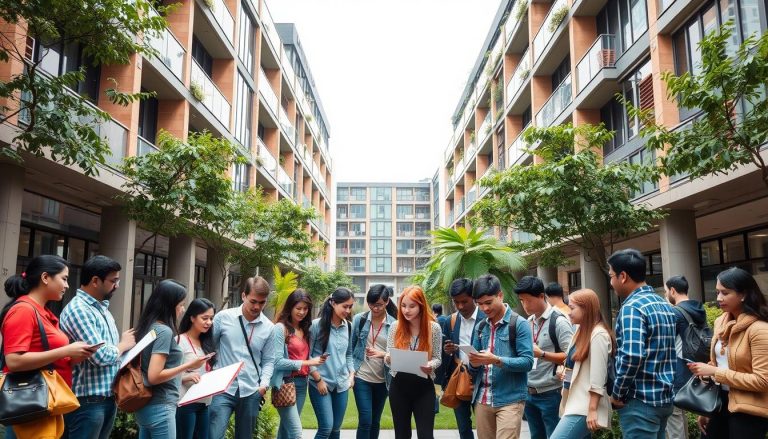Student Loan Debt’s Impact on Higher Education
The cost of going to college in the U.S. has gone up a lot, making student loan debt a big problem. This crisis affects how easy it is for people to go to college, how much it costs, and if everyone can afford it. It also affects students’ financial futures and the whole economy.

A somber scene depicting a student surrounded by towering stacks of books and oversized loan documents, with a shadowy figure representing debt looming overhead. In the background, a crumbling university building symbolizes the decline of higher education quality, while the foreground features empty wallets and broken piggy banks scattered on the ground, reflecting financial struggle. The overall atmosphere is heavy and poignant, conveying the emotional weight of student loan debt.
Tuition keeps going up, making it hard for students and their families to pay. Many students have to take out loans just to go to school. This debt makes it hard for people to get financially stable. It also stops some students from going to college because they can’t afford it.
This debt crisis has big effects on the economy. New graduates can’t buy a home, start a family, or save for retirement because of their loans. It also makes students choose jobs based on the pay instead of what they love. This makes the problems in higher education even worse.
Key Takeaways
- The rising cost of higher education has led to a significant increase in student loan debt, creating a crisis that threatens the accessibility and affordability of colleges and universities.
- The financial burden of student loans has far-reaching economic implications, including delayed financial milestones and constraints on career choices for graduates.
- Debt relief policies and proposals, such as income-driven repayment plans and loan forgiveness programs, have emerged as potential solutions to address the student loan crisis and its impact on higher education.
- Addressing the accessibility and equity of higher education is crucial to ensuring that all students, regardless of their socioeconomic background, have the opportunity to pursue their educational goals.
- Comprehensive reforms to the higher education system, including measures to control rising tuition costs and expand financial aid options, are necessary to address the long-term sustainability of the sector.
Understanding the Student Loan Crisis
The student loan crisis is a big problem today. Tuition costs and financial burdens make it hard for people to get into college. The cost of going to school has gone up a lot, making it tough for students and their families to pay for it.
Rising Tuition Costs and Financial Burdens
Tuition fees keep going up, putting a big load on students and their families. This has led to more student loan debt. Many people are struggling to pay back their loans. The rising cost of college has made it harder for people to get into higher education.
Accessibility and Affordability Challenges
The student loan crisis affects how easy it is to afford college. It’s harder for people from different backgrounds to go to college. The financial burdens of school costs make some students skip or delay college, making it even harder to get into higher education.
“The student loan crisis has become a significant obstacle to education, limiting the opportunities available to individuals from all walks of life.”
We need to fix the student loan crisis by looking at the main problems. This means dealing with high tuition costs and making sure financial aid is easier to get. This way, college can stay an option for everyone, no matter their background.
A heavy, cracked graduation cap resting on a stack of oversized student loan bills, surrounded by an abstract representation of a crumbling academic building, with chains symbolizing debt looming overhead and a shadowy figure in the background representing uncertainty and stress.
Economic Implications of Student Debt
The growing burden of student debt has big effects on both individuals and the economy. It delays important financial steps, like buying a home, starting a family, or saving for retirement.
Delayed Financial Milestones
Carrying a lot of student debt makes it hard for graduates to save for a house or start a family. This delay affects the economy by slowing growth and limiting wealth building.
Impact on Career Prospects
Debt can also change career choices. Students might pick high-paying jobs to manage their loans. This can stop them from following their dreams or starting their own businesses, affecting their career satisfaction.
“The economic impact of student debt is not just felt by the individual graduates, but by the entire economy as it slows down the pace of financial progress and limits the potential for economic growth.”
Struggling with loan repayments can also delay financial investments, like starting a business or buying a home. This adds to the economic effects of student debt. It affects not just individual well-being but also the nation’s economic health.
A surreal landscape depicting a crumbling university building surrounded by towering stacks of student loan documents, with anxious students walking in chains made of coins, set against a backdrop of a stormy sky and distant cityscape representing economic turmoil.
Impact of Student Loan Debt on Higher Education
The growing burden of student loan debt makes higher education less accessible and affordable. As tuition goes up, students from different backgrounds find it harder to get a college degree. This limits the opportunities for those from less fortunate communities.
Student loan debt stops some students from going to college. It also affects the quality of their education. With not enough money, students might choose cheaper schools or programs that don’t match their goals. This can hurt their future and make the gap between rich and poor wider.
“The student debt crisis has become a significant obstacle to achieving true education equity. It’s time to prioritize policies that make higher education more accessible and affordable for all.”
High education costs and student loans can stop people from even thinking about college. This could make the problem of not having enough diversity in schools worse.
To fix these issues, we need to focus on making college cheaper and helping students with loans. We should also look into making more financial aid available and helping students pay off their loans. By doing this, we can make education more fair and open for everyone.
- The growing burden of student loan debt restricts access to higher education, especially for those from underserved communities.
- Student loan debt impacts the quality of the educational experience, forcing students to compromise on their academic and career choices.
- The high cost of education and student loan burden can deter prospective students from pursuing higher education, exacerbating socioeconomic barriers.
- Addressing the impact of student loan debt on higher education requires policy reforms to increase college affordability and expand access to financial aid.
Debt Relief Policies and Proposals
The student loan crisis affects millions of Americans. Policymakers and advocates have come up with debt relief plans. These plans aim to make repayment easier and lessen the financial stress on borrowers. They could change the future of higher education in the U.S.
Income-Driven Repayment Plans
Income-driven repayment (IDR) plans are a big part of these solutions. They link a borrower’s monthly payments to their income. This makes sure payments stay affordable as their financial situation changes. With flexible repayment options, IDR plans could greatly help student loan borrowers.
Loan Forgiveness Programs
Loan forgiveness programs are another key solution. Programs like Public Service Loan Forgiveness (PSLF) and Temporary Expanded PSLF (TEPSLF) help those in public service or certain careers. They offer debt cancellation, encouraging people to work in important fields. This helps with the big issue of making student loans more affordable.
FAQ
What is the impact of student loan debt on higher education?
The growing student loan debt crisis is making higher education less accessible and affordable. Rising tuition costs and financial burdens are stopping many from pursuing college. This affects students and their families greatly.
How is the student loan crisis affecting the accessibility and affordability of higher education?
The student loan crisis makes college hard to get into and expensive. Tuition keeps going up, and student debt grows. This hits students from lower-income families the hardest, making college dreams out of reach.
What are the economic implications of the student debt crisis?
The student debt crisis has big economic effects. It can stop graduates from reaching big financial goals like buying a home or starting a family. It also affects their careers and has big economic effects on society.
How does student loan debt directly impact the higher education system?
Student loan debt makes college less accessible and affordable. It creates barriers for people from different backgrounds to get into quality higher education. This affects educational fairness and the success of the education system.
What debt relief policies and proposals are being considered to address the student loan crisis?
To fix the student loan crisis, new policies like income-driven repayment and loan forgiveness are being looked at. These plans aim to make repaying loans easier and reduce debt. They could help the education system and the economy.






